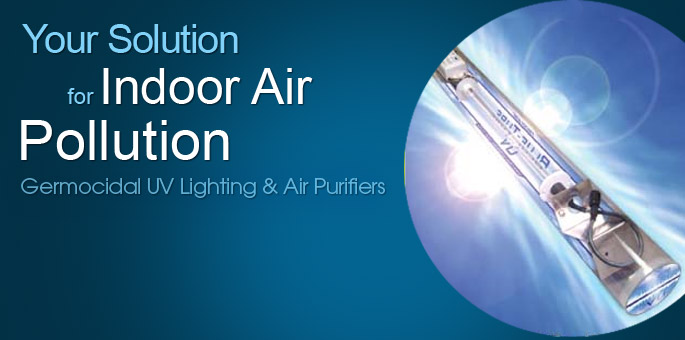The EPA claims that people spend about 90 percent or more of their time indoors which, while it may seem like a safe place to be, may end up doing you and your family more harm than good. The quality of the air inside your home can actually be up to five times more polluted than what blows in from outside.
 Up to 15,000 children are hospitalized annually due to respiratory infections, many of which are caused or aggravated by poor indoor air quality.
Up to 15,000 children are hospitalized annually due to respiratory infections, many of which are caused or aggravated by poor indoor air quality.
Several factors go into making indoor air quality, IAQ for short, potentially harmful, ranging from simple things like pet dander, mildew and even dry cleaning chemicals to what is known as the Deadly Three: carbon monoxide, secondhand smoke and radon gas.
To help fight these elements, you need to first examine your own home’s indoor air quality. This can be done in many ways, the most common being do-it-yourself kits that can cost from $50 to $1,600 depending on the amount of pollutants to be checked for and the overall breadth of the test.
Many are widely available on the Internet and these at-home kits involve relatively simple instructions on how to collect samples of air quality throughout your home. For these tests, you’ll want to keep all windows closed for up to 24 hours prior as well as maintaining indoor air circulation via ceiling fans during the testing period.
After the samples are collected they are mailed off to a specified testing facility that will analyze the results and send their report back to you. Of course, if DIY home maintenance seems too difficult or time-consuming, and some of these kits can be, there are plenty of professionals in your local area who can test your IAQ for you.
Other Ways to Monitor and Improve Your Air Quality
- Install a CO detector – Carbon monoxide kills 400 people and sickens thousands each year. If you have a garage, make sure never to idle the car or use other fuel-burning machines with the garage door closed.
- Test for Radon – DIY kits are available through the mail and in many hardware stores. They are easy to use and relatively inexpensive, but make sure to get ones that are either state-certified or approved by the National Radon Proficiency Program.
- Check any asbestos-laden materials for damage, water and wear, but be careful not to touch or disturb them: asbestos is at its most dangerous when airborne. If anything looks suspicious, get a professional’s help to remove them.
- Always maintain a high level of ventilation throughout your home.
- Ban all smoking indoors.
- Get rid of dust mites – clean carpets and upholstery regularly with a HEPA-filtered vacuum, and launder bed linen in super-hot water every two weeks.
Important Air Quality Facts
 There’s no such thing as a “hypoallergenic pet.” With dander, hair shedding, urine, saliva and feces as breeding grounds for allergies, no animal is ever completely allergen free. Make sure to brush your pets outside if possible, and allow them ample time outdoors. This goes especially for birds, and their cages, if you want to avoid respiratory issues.
There’s no such thing as a “hypoallergenic pet.” With dander, hair shedding, urine, saliva and feces as breeding grounds for allergies, no animal is ever completely allergen free. Make sure to brush your pets outside if possible, and allow them ample time outdoors. This goes especially for birds, and their cages, if you want to avoid respiratory issues.
Countless households contain some form of air filter or purifier nowadays, but it’s important to know their limits. Many dangerous particles are too heavy or fine to be trapped by these purifiers, so don’t rely on them alone to cleanse the air in your home.
To find out more ways to monitor, test and improve the air quality in your home, visit the Environmental Protection Agency online at epa.gov, and see how you can best safeguard your home and family.












